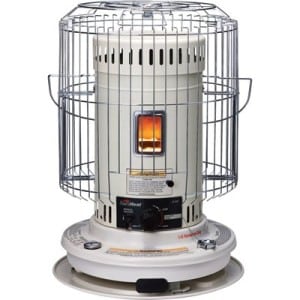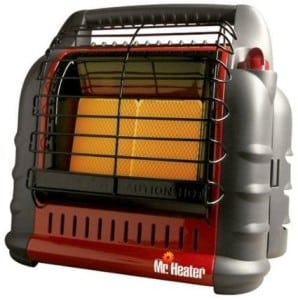Baby, it’s cold outside! Much of the US over the past two years has seen some pretty extreme cold temperatures. If you haven’t thought about cold weather preparedness in the home, you need to start considering it.
Whether you have gas or electric generated heat, our HVACs still function on electricity. If the juice goes out, so does the ability to heat your home unless you have alternatives. If the heat does go out, it’s not only about keeping you and your family warm. You could be facing thousands of dollars’ worth of pipe damage if the water in your lines freeze.
Wood stoves are nice, but they can cost you thousands of dollars for the installation. A fireplace can also be a great alternative heating source. However, if you’re not accustomed to using your wood stove or fireplace frequently, it will surprise you with how much wood you need to burn every day for a couple of days. If you have the capability, ensure you know exactly how much wood you need to store if an emergency arises.
For the folks that don’t have a fireplace and cannot afford a wood stove, propane and kerosene are the best alternative heat sources available!
I own and have used both technologies to heat my home over the past two winters. Here’s the Pros & Cons that I’ve found:
PROS
- This unit heats up to 1,000 square feet. In reality, I’ve found it to heat 1,500 square feet comfortably by itself in temps around 20-30F.
- In less than 1 minute, you can have about 23,000 BTU of heat (with this model)
- It’s portable and can be moved room to room.
- Safe Indoors. So long as its operated in a large space with good ventilation, there’s no carbon monoxide or other chemical risks. However, you do have to pour fuel into the unit. Make no mistake, kerosene is a very stable/safe fuel and needs a wick to burn. Putting a match to pure kerosene will not light on fire like gasoline will.
- Cost Effective – Kerosene from the gas station is about $4.00 per gallon. 2 gallons will heat your home with this heater for around 12 hours. Do not buy the 1K kerosene from store shelves as it will cost $10 per gallon.
- Humidifies the air.
CONS
- Smell. Within the first minute of lighting the heater, it will have a slight smell. This is not so much of an issue for starting up the heater in the home. When you shut the heater off, it has a major smell that will fill the entire house. In my home, I move the heater to the garage and shut it off to avoid this.
- Kerosene is difficult to find depending on where you live. You can go on individual gas station web sites and look up the keyword kerosene to find stations that carry the fuel. I need to drive 15 minutes away from my home for the closest gas station which is not pleasant. Just stock up on more of it for each trip if need be.
- Maintenance – With these heaters, every couple re-fuelings you will need to dry burn the wick and brush the fibers so that it efficiently burns. This is not major maintenance, but can be annoying as your heater will be out of commission for about an hour or two while you let it complete the dry burn cycle.
- Non Adjustable Heat – The wick has to burn at a particular height to ensure an efficient burn. If you buy the 23,000 BTU model, you’re stuck with 23,000 BTU. If it gets too hot, you’ll need to shut it off or open windows. Reducing the wick will cause an incomplete burn which will result in possible toxicity and smells. Make sure you buy an appropriate model for the size area you want to heat.
PROS
- Just like kerosene, it’s cost effective, portable, safe indoors, heats up quickly and can heat large spaces depending on the model you choose.
- No smell like kerosene even when lighting or shutting off.
- No routine maintenance like the kerosene wick.
- The heat output can be adjusted unlike kerosene.
- You can find propane pretty much anywhere. There are adapter hoses which you can hook up to the large propane canisters if you choose.
CONS
- I haven’t found too many cons with using the propane heaters other than it takes a little bit longer to obtain full BTU burn temps compared to the kerosene heater I have. It has more of a dry burn that the humidifying effect of kerosene.
Based on the Pro’s & Con’s, you would think I’m a propane guy. However, I find myself using the kerosene heater WAY more than the propane. I feel as though it heats the home up better (probably because of the humidity). It might also be a psychological thing as I like to see a burning flame as opposed to a red hot ceramic filament in the Mr. Heater.
Either way, I think both are a great option if you are searching for alternative heat.
For more cold weather tips, you can read my article 2015 Polar Vortex Preparedness.
Also, do check out my article with top climate scientist John Casey who is predicting a major global cooling for several decades based on solar cycles. You can watch the interview here!





